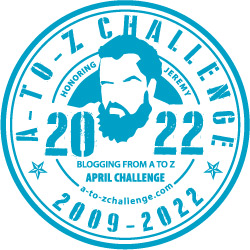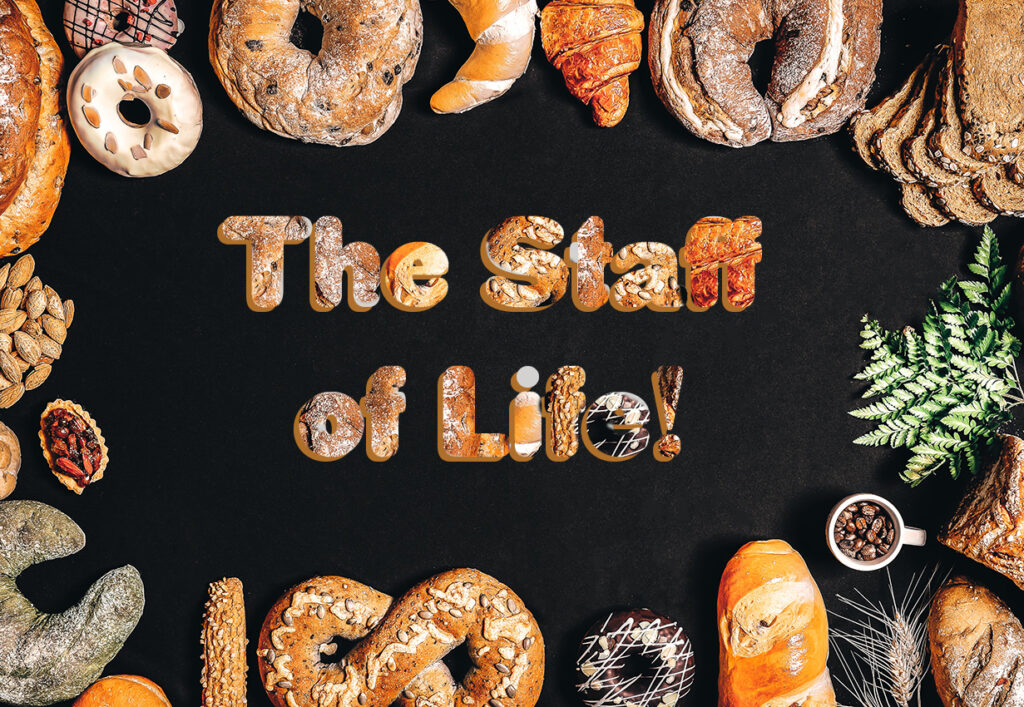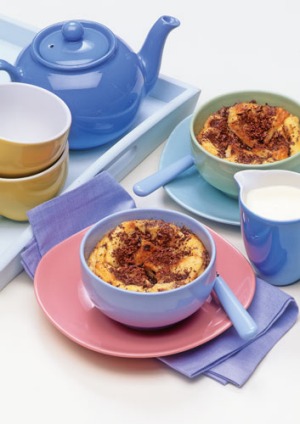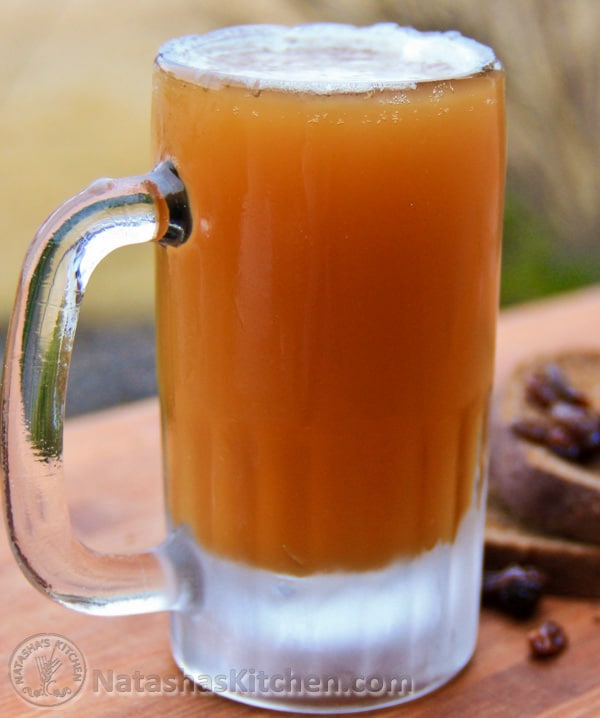The dual theme of my A to Z Challenge this year is the world of Commodities and Poetry Forms so the juxtaposition of these two themes may throw up some strange poems – could be a Heroic Ode to Heating Oil or will it merit a Haiku or a Haibun – whichever, I will be endeavouring to bring you interesting facts about commodities that may change the way you think about the stuff we variously depend on…
By commodity I mean certain items that are of both sufficient value/volume to be traded in special markets and are generally volatile enough to attract traders in “Futures” which are a way of hedging bets in the trading world of stocks, shares and commodities.
The A to Z Challenge runs throughout April and will consist of 26 posts – there are only a couple of letters for which I couldn’t find commodities but plenty of poetry forms to carry the day!
The Worldwide Trade in Wheat 2022 was $73.3Billion and it was the 49th most traded product…

“Give us our daily bread…” says the Lord’s Prayer although the making of bread from wheat is by no means limited to the Christian West and I am sure there are similar lines in prayers of other religions (do please say if you know any…) but it indicates the huge importance of wheat and the bread, pasta, and cake that it is used to make, among other things. “Wheats are a part of Cereals. They include Wheat except durum wheat, and meslin and Durum wheat.” says the OEC website on Commodities. I confess I had not heard of Meslin (which turns out to be a planting of Wheat and Rye together) though I can disambiguate the other main types of Wheat which largely fall into two categories hard and soft wheat – this is not to do with physical hardness – in fact Durum wheat is physically harder, takes more milling, which damages some of the starches, has less gluten and is therefore has higher extensibility. This means they are more easily stretched into long pieces without breaking, making them ideal to use in pasta. Common Wheat on the other hand has a higher elasticity, which helps them bounce back when kneaded. This makes common wheat a better choice when making bread (the elasticity is what allows the bread to trap bubbles of carbon dioxide allowing the bread to rise). So Red Winter Wheat as grown in Canada for example, is a “hard” high-gluten bread-making flour whilst the Spring Wheats grown in say, France, are “soft” (less gluten) wheats and more suitable for cake making. Durum wheat (“soft” in gluten terms but physically hard) is used for pasta making. Below is a chart showing the gluten content of Common Wheat, Durum Wheat and two of the ancient grains from which our modern wheats are descended Emmer and Spelt… Oh and Meslin – is grown mainly for animal feeds these days but was big in breadmaking from Medieval times and its use in baking died out after the Second World War.
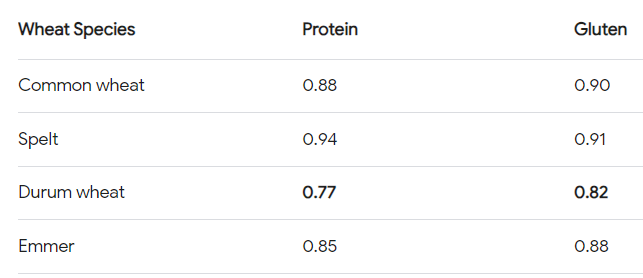
With Wheat as a commodity, we once encounter the geopolitical importance of markets and once again the unwarranted war by Putin on the Ukraine comes to the fore. Once described as the breadbasket of the Soviet Union, Ukraine has not been well treated by Russia – under Stalin, whose collectivist farming policies were so efficient, that even in a land so blessed in soil and climate as Ukraine – they caused collective failure. Stalin punished Ukraine by taking all the grain including the next year’s seed grain which of course only exacerbated the problem the following year and led to a famine in the Ukraine so severe that people resorted to eating the dead to survive. This little-known atrocity was depicted in the film Mr Jones in which a determined Welsh journalist goes to Ukraine and sees for himself the devastation. This is one of the reasons why Putin, hubristically primed by his revisionist book to regard Russia as the “mother” of Ukraine (and not the other way round as is the real truth) was surprised to find that the people of Ukraine did not welcome him in to take Ukraine back into his dream of a re-unified Soviet state but instead continue to fight tooth and nail to stay free. Ukraine has become the bread bowl to a wider market supplying vital grain to many African countries who in turn, were pushed nearer to famine by Putin’s war. Fortunately, some grain is now getting out…
To understand who Exports and who Imports wheat and the value of those transactions – go to https://oec.world/en/profile/hs/wheat where they have some amazing interactive infographics but unless you are a commodity trader (and I suspect most of you are not!) then I am going to close the factual part of this post with a word about roller milling and stoneground wheat. The wheat kernel consists of a husk – the bran – inside which are two halves of flour joined together with a little proto-plant – the wheatgerm. In the old days of windmills turning great round grindstones, the grain was fed in between the stones and crushed into pieces but this included the wheatgerm which is a living plant and so if the stoneground flour was not used fairly quickly, the crushed wheatgerm would turn the flour rancid. The modern roller mills consist of heavy metal rollers that can be adjusted so precisely, that they first, delicately crack off the bran which is separated and perhaps further chopped up. Then the rollers gently break the two haves of the kernel apart so that the wheatgerm falls out and is taken away to be roasted – this kills the plant and makes a tasty product in its own right. Lastly, the rollers can grind the flour kernels down with such precision that different grades of flour are obtainable from the outside to the middle. Now if the mill wants to offer 100% Wholemeal Flour, then it can mix the bran, the toasted wheatgerm and all the flour back together and this flour will keep much longer than Stoneground – so what is the difference? Well stoneground flour contains a mish-mash of different-sized particles from pure flour to fragments of the kernel still in its bran and this means that when baked, the flour releases its carbohydrate slowly. Roller-milled flour is essentially white flour with the bran and wheatgerm added back in and that makes it a fast-release carbohydrate – in other words, you might as well be eating white flour in terms of carbohydrate release…
And so to today’s poem a WaltMarie. The Writers Digest University offers this definition:-
This week, a Poetic Asides member shared a poetic form she created. While I don’t usually share nonce forms, I’ve tried this one myself, and I think it’s a lot of fun. So without further ado, I’m introducing Candace Kubinec’s form, the Waltmarie (which is itself a nod to PA members and Poetic Bloomings hosts, Marie Elena Good and Walter J. Wojtanik).
Here are the guidelines for writing the Waltmarie:
- 10 lines
- Even lines are two syllables in length, odd lines are longer (but no specific syllable count)
- Even lines make their own mini-poem if read separately
No other rules for subject or rhymes.
Wheat
Give us
our daily bread or just
the flour
and we will scavenge fire-wood
to bake
the staff of life
flat bread
or leavened if we can manage
for life
keeping body and soul together…
© Andrew Wilson, 2024

Photo: © UNRWA/Ashraf Amra
(Dedicated to the refugees in their own land Palestine
but also to refugees or those afflicted by famine
whether caused by war or climate change
anywhere in the world…
You can donate here Oxfam)

